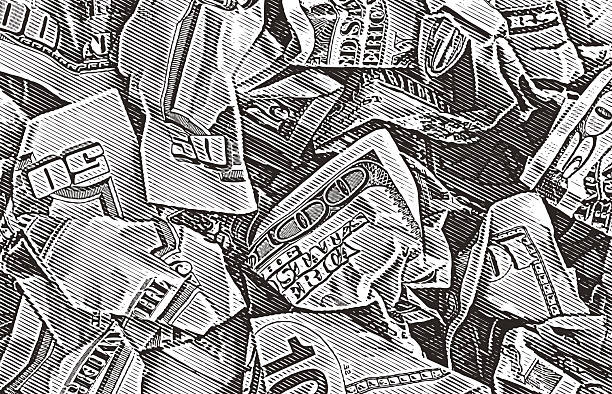 The crisis of overextended personal debt is rarely the result of a single poor decision. Instead, it is typically the culmination of several intersecting factors, a perfect storm of economic pressures, societal expectations, and systemic traps that overwhelm individual financial resilience. Understanding these contributing forces is essential to comprehending the scale of the problem beyond mere personal responsibility.A primary driver is the stark reality of income stagnation against the rising cost of living. For decades, wages for many have failed to keep pace with inflation for essential goods such as housing, healthcare, and education. This creates a structural gap between earnings and expenses, forcing households to rely on credit cards and loans not for luxuries, but for basic sustenance and stability. Debt becomes a necessary bridge to maintain a semblance of a middle-class life, even as that bridge stretches precariously over a chasm.The normalization and aggressive marketing of debt further fuel this fire. Financial institutions readily extend credit lines, often with high interest rates, while buy-now-pay-later schemes and easily accessible auto loans encourage immediate gratification over fiscal prudence. This cultural shift frames debt not as a last resort but as a standard financial tool, obscuring its risks and long-term consequences. Societal pressure to achieve certain milestones—homeownership, a new car, a curated lifestyle amplified by social media—pushes individuals to finance a reality they cannot yet afford, prioritizing appearance over economic health.Finally, a lack of robust financial education leaves many vulnerable to these pressures. Without a foundational understanding of compound interest, budgeting, or the true long-term cost of minimum payments, individuals can easily underestimate the trap they are entering. This knowledge gap, combined with an absence of safety nets for emergencies, means a single unexpected event—a medical crisis, a car breakdown, a job loss—can force a person from manageable finances into a debt spiral from which escape is exceptionally difficult. Ultimately, overextension is not a character flaw but often a rational, if desperate, response to an economic environment designed to encourage borrowing while providing few tools for sustainable wealth building.
The crisis of overextended personal debt is rarely the result of a single poor decision. Instead, it is typically the culmination of several intersecting factors, a perfect storm of economic pressures, societal expectations, and systemic traps that overwhelm individual financial resilience. Understanding these contributing forces is essential to comprehending the scale of the problem beyond mere personal responsibility.A primary driver is the stark reality of income stagnation against the rising cost of living. For decades, wages for many have failed to keep pace with inflation for essential goods such as housing, healthcare, and education. This creates a structural gap between earnings and expenses, forcing households to rely on credit cards and loans not for luxuries, but for basic sustenance and stability. Debt becomes a necessary bridge to maintain a semblance of a middle-class life, even as that bridge stretches precariously over a chasm.The normalization and aggressive marketing of debt further fuel this fire. Financial institutions readily extend credit lines, often with high interest rates, while buy-now-pay-later schemes and easily accessible auto loans encourage immediate gratification over fiscal prudence. This cultural shift frames debt not as a last resort but as a standard financial tool, obscuring its risks and long-term consequences. Societal pressure to achieve certain milestones—homeownership, a new car, a curated lifestyle amplified by social media—pushes individuals to finance a reality they cannot yet afford, prioritizing appearance over economic health.Finally, a lack of robust financial education leaves many vulnerable to these pressures. Without a foundational understanding of compound interest, budgeting, or the true long-term cost of minimum payments, individuals can easily underestimate the trap they are entering. This knowledge gap, combined with an absence of safety nets for emergencies, means a single unexpected event—a medical crisis, a car breakdown, a job loss—can force a person from manageable finances into a debt spiral from which escape is exceptionally difficult. Ultimately, overextension is not a character flaw but often a rational, if desperate, response to an economic environment designed to encourage borrowing while providing few tools for sustainable wealth building.
The primary strategic tool is a balance transfer credit card. These cards offer a low or 0% introductory APR on transferred balances, allowing you to stop paying high interest for a period (often 12-21 months), so more of your payment goes toward reducing the principal debt.
While paying more than the minimum doesn't change your current required payment, it aggressively reduces the principal debt. As the principal shrinks, so do the future minimum payments, steadily improving your PTI over the long term.
Understand your insurance coverage, save in an HSA or FSA, inquire about costs upfront, and seek in-network providers. Build an emergency fund to cover unexpected medical costs.
This is often the most prudent first step. Working even a few extra years provides multiple benefits: more time to pay down debt, allows retirement savings to grow without being drawn down, and delays claiming Social Security, which increases your monthly benefit permanently.
The most problematic debts are often a combination of lingering student loans, large mortgages, expensive auto loans, and high-interest credit card debt accumulated from lifestyle inflation, child-rearing costs, or covering budget shortfalls.